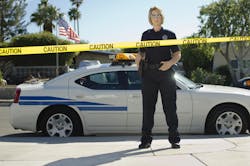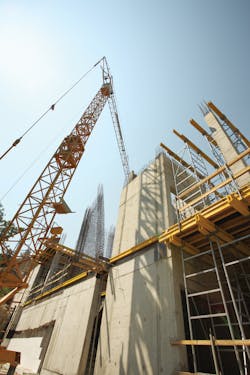Outlook 2014: What's Ahead for Education This Year
Numerous topics and concerns are likely to confront educators and administrators in 2014, but the outlook for schools and universities for the coming year could be summed up in a simple headline seen on the Internet: “Serious issues ahead, major changes unlikely.”
Educating millions of students is a serious business, and the decisions school districts and higher-education institutions make as they navigate through a world of more intense scrutiny, increased expectations and reduced resources will go a long way in determining whether those students become productive and successful members of society.
But because of the sheer size of the U.S. education system, changes happen slowly, even when everyone agrees that the old ways of doing things are falling short. And because of the cyclical, year-to-year nature of the system, education institutions will inevitably see the same issues every year.
So, a look at what is ahead for education in 2014 is going to be dominated by many of the subjects that schools and universities have been grappling with for years.
Safety and Security
In 2013, countless schools and universities took steps to bolster security on their campuses to address the concerns of those reeling from the horror of the shooting deaths at Sandy Hook Elementary School in Newtown, Conn.
Those efforts are likely to continue in 2014 and beyond, as the thousands of school administrators, board members, lawmakers, law-enforcement officers and communities try to agree on the best way to protect students and staff members from violence and other dangers.
That issue still is being debated, but many schools have been taking steps to upgrade their facilities to make campuses safer. Some schools have had these security measures for years, but many others are just now being persuaded to add these elements, especially at elementary schools, which before December 2012 had been perceived as places less likely to attract the kind of deadly violence that occurred at Sandy Hook.
The measures include installation of video surveillance; access-control systems and locked exterior doors that restrict entry; intercoms; panic buttons for individual teachers and staff members; installation of fencing, and more secure exterior doors, windows and fences; conducting background checks and issuing identification for any visitors to a school facility; equipping interior doors with locks to keep out an intruder who has overcome exterior building security; and providing staff members with radios or other emergency communications equipment.
The growing impetus to keep outsiders from entering school facilities comes into conflict throughout the nation with the traditional use of schools as polling places. Having voting equipment and personnel claim part of limited space in a school and having a steady stream of voters entering the building throughout a school day can make it difficult for schools to maintain the level of security that administrators feel they should have in the aftermath of Sandy Hook.
The conflict between schools and election officials may be addressed later this year when the Presidential Commission on Election Administration issues a report on improving access to polling places.
Finding enough polling places would be difficult in many jurisdictions if schools could not be used. In addition, the characteristics found in school facilities make them especially suited to serve as voting locations, Cook County, Ill., Clerk David Orr told the commission last year.
“They have accessible interests, modern wiring, Internet connectivity, adequate space, sufficient lighting and usually a good geographic distribution,” Orr says. “They also have classrooms and chairs, which is sometimes important for voters who have to complete paperwork or need to sit for a while.”
Since the Sandy Hook shootings, concerns about polling places have increased among education administrators.
“Schools are less and less inclined to want to make those facilities (available as) locations for voting, because you have access from people coming in off the street,” Ohio Secretary of State John Husted told the commission. “This is an issue that we are beginning to confront.”
Election officials assert that security concerns about polling places in schools could be eased if students did not attend classes on an election day—a school holiday could be scheduled, or a school could schedule an in-service day for staff members.
Some school officials have balked at that solution, election officials told the commission, because elections are typically on a Tuesday, and schools prefer to schedule in-service days on Mondays or Fridays.
Technology
The infusion of computer technology into education has been happening for many years now, but in recent years, the emergence of more portable Internet devices such as tablet computers has persuaded many education institutions to embrace them as tools that have the potential to transform student learning.
As many districts embrace the iPad or other tablet computers for student use, the new technology has renewed an old argument about education and technology: Are schools moving too fast to incorporate the latest technology without a clear understanding of how they will be used to improve learning and without adequately training teachers on their operation?
Despite those setbacks, the potential for tablets and other portable devices to improve student learning will bring more of the technology into classrooms in 2014. The goal for many educators is to establish a one-computer-per-student learning environment, and tablets or smartphones that students bring from home can help schools accomplish that objective.
With that level of student access to technology, schools can make a switch from printed textbooks to digital versions, and students can more easily take part in online courses that aren’t available at their own schools. Such technology also enables teachers to use flipped instruction, in which students receive class content online so that classroom time can be used for discussion and interaction with the instructor.
Construction and maintenance
The size and location of the needs may shift from year to year, and the money available to address those needs may or may not be forthcoming, but it’s a safe prediction that in 2014 K-12 school districts and higher-education institutions will spend billions of dollars building new facilities or upgrading existing space to meet the needs of modern education.
Some of the need comes from continued enrollment growth in the nation’s school districts. The National Center for Education Statistics projects that by 2021, more than 51.3 million students will be enrolled in U.S. public schools—a 7.3 percent increase over 2010.
More facility funds will be needed to renovate existing school space that has become outdated because of educational innovations or because schools didn’t have the money to carry out preventive maintenance. Deferred maintenance historically has been a problem for schools, and has become worse in the five years since the economy went into free fall and education budgets endured painful cuts.
In just one district, the 58,000-student Garland (Texas) system, a facilities report completed last year identified nearly $1.5 billion in facility projects that were needed to renovate schools and upgrade space to district and state standards.
New York charters
Change is definitely on the horizon in 2014 in the nation’s largest school district. Under Michael Bloomberg’s 12-year tenure as mayor of New York City, the school system has opened many charter schools, often co-locating them in buildings with existing public schools.
In 2012-13, the city had 58,353 students enrolled in 160 charter schools, according to the National Alliance for Public Charter Schools.
But the prognosis for future charter school growth in New York City is uncertain now that Bloomberg has been replaced by newly elected Mayor Bill di Blasio. He has appointed a new schools chancellor, Carmen Farina, to oversee the system and its 1 million students, and di Blasio’s campaign called for charging charter schools rent for use of public school space and for curtailing the practice of co-locating.
The National Alliance for Public Charter Schools says a moratorium on co-location could eliminate more than 15,000 new charter school seats annually, and charging rent could force charters to turn away students on waiting lists.
“As Ms. Farina and Mayor-elect de Blasio develop their plans for New York City public schools, we encourage them to consider the vital role charter schools have played in increasing options and quality for students and families across the city,” says Nina Rees, president of the National Alliance. “The rest of the country has always looked to New York City as an example of vibrant and successful charter schools and we hope that trend will continue.”
Charter growth
The number of public charter schools, which are freed from some of the regulations that govern traditional public schools in an effort to find innovative and effective ways to teach students, has been growing steadily for the better part of two decades, and the numbers are expected to continue to climb in 2014.
The National Alliance for Public Charter Schools says that the number of charter schools has more than quadrupled since 1999-2000, and the number of students attending charters is nearly eight times greater. In 2013-14, an estimated 2.6 million students were attending 6,440 charter schools, compared with about 350,000 students in 1,542 charter schools in 1999-2000.
The Alliance says that in 32 school districts, more than 20 percent of students were enrolled in charter schools; in New Orleans, 79 percent of public school students attend charters. In Los Angeles, more than 120,000 students are attending charters.
Advocates hope to persuade lawmakers in Kentucky to pass legislation in 2014 that would make it the 43rd state to allow public charter schools.
About the Author
Mike Kennedy
Senior Editor
Mike Kennedy, senior editor, has written for AS&U on a wide range of educational issues since 1999.



